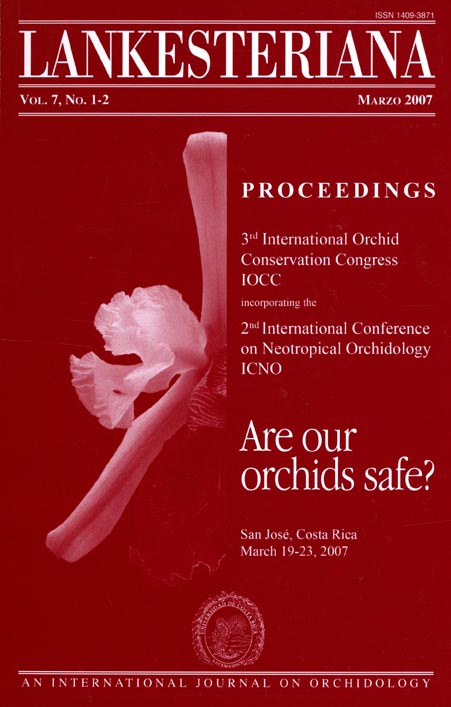Ecology of orchids in urban bushland reserves – can orchids be used as indicators of vegetation condition?
DOI:
https://doi.org/10.15517/lank.v7i1-2.19531Keywords:
, terrestrial orchid, indicators, urban reserves, vegetation condition, mycorrhiza, pollination Abstract
The loss of urban native vegetation is a global cri- sis particularly as cities continue to expand and pop- ulations grow. Native vegetation often remains as small isolated fragments embedded in the human matrix of urban development. These remnants become islands of biodiversity that experience vary- ing degrees of degradation due to their high perime- ter to area ratio.
Downloads
Downloads
Published
How to Cite
Issue
Section
License
According to the Open Access policy promoted by the University of Costa Rica, all the papers published by Lankesteriana are licensed under the Creative Commons copyright and can be downloaded free of charge. The journal holds copyright and publishing rights under the CC BY-NC-ND 3.0 CR license.
Before the publication of the materials submitted by the author(s) in LANKESTERIANA, the author(s) hereby assign all rights in the article to the Lankester Botanical Garden.





